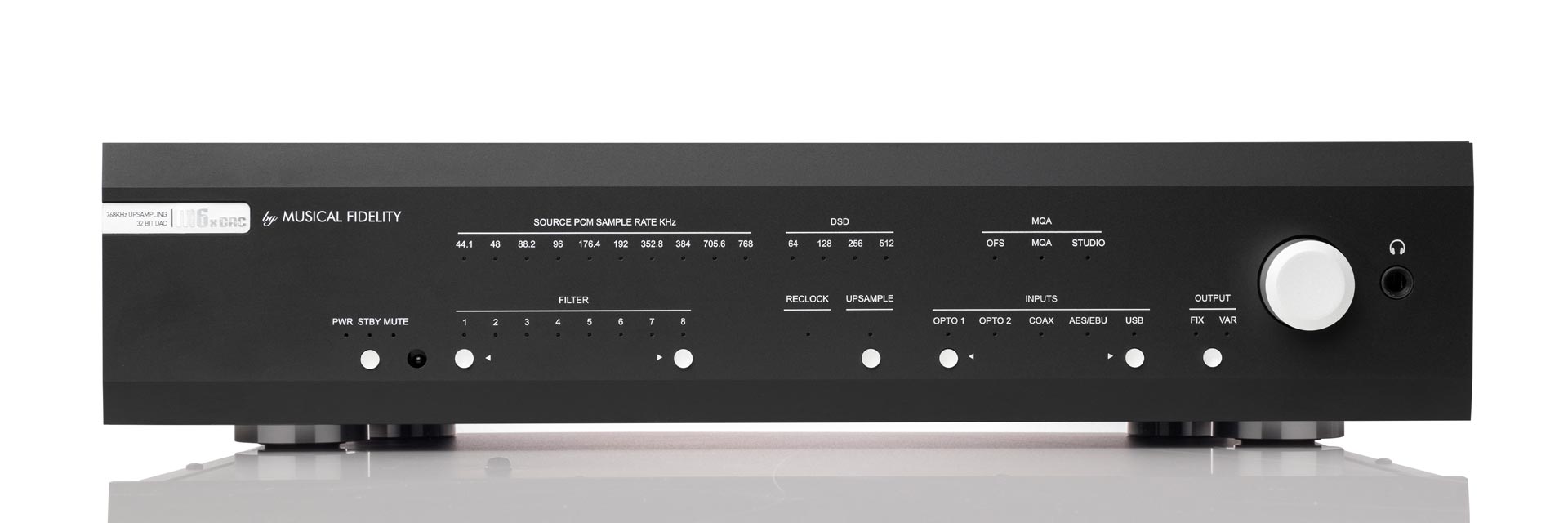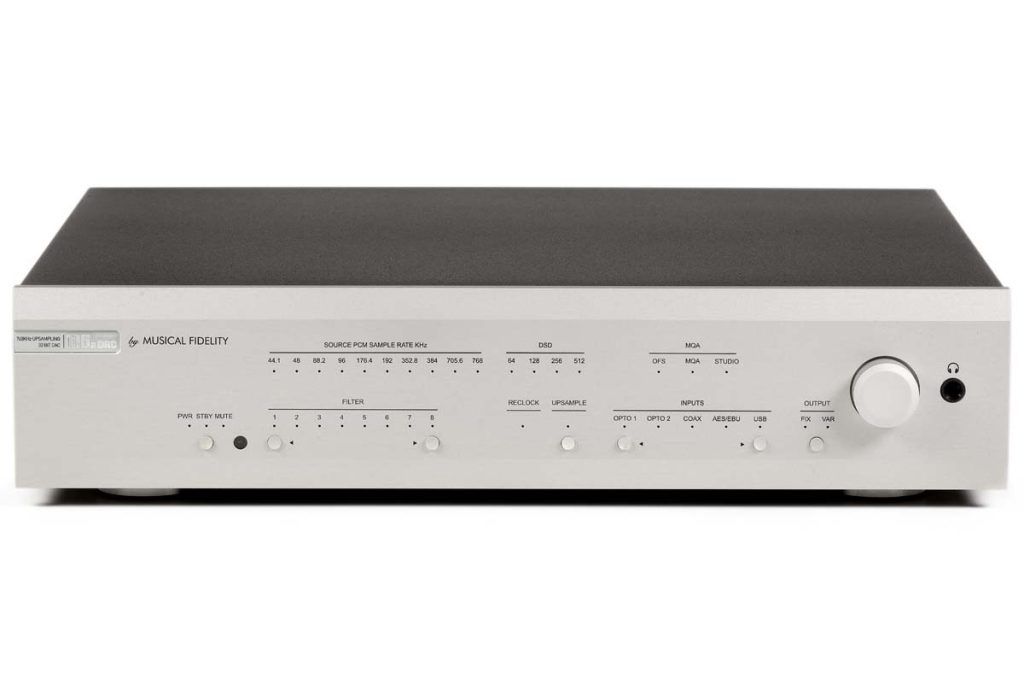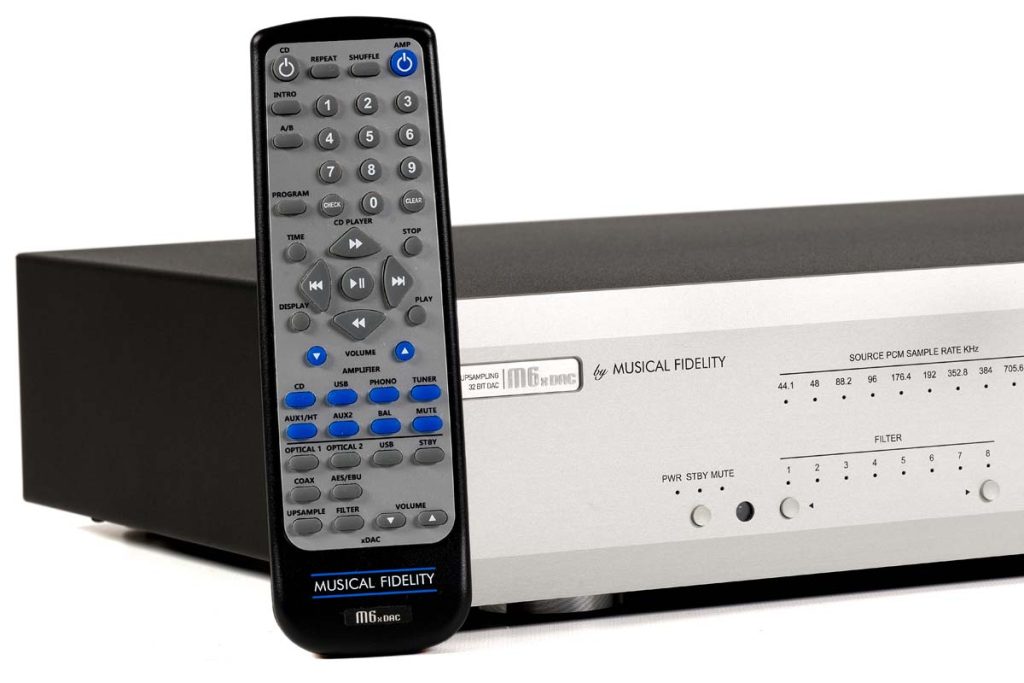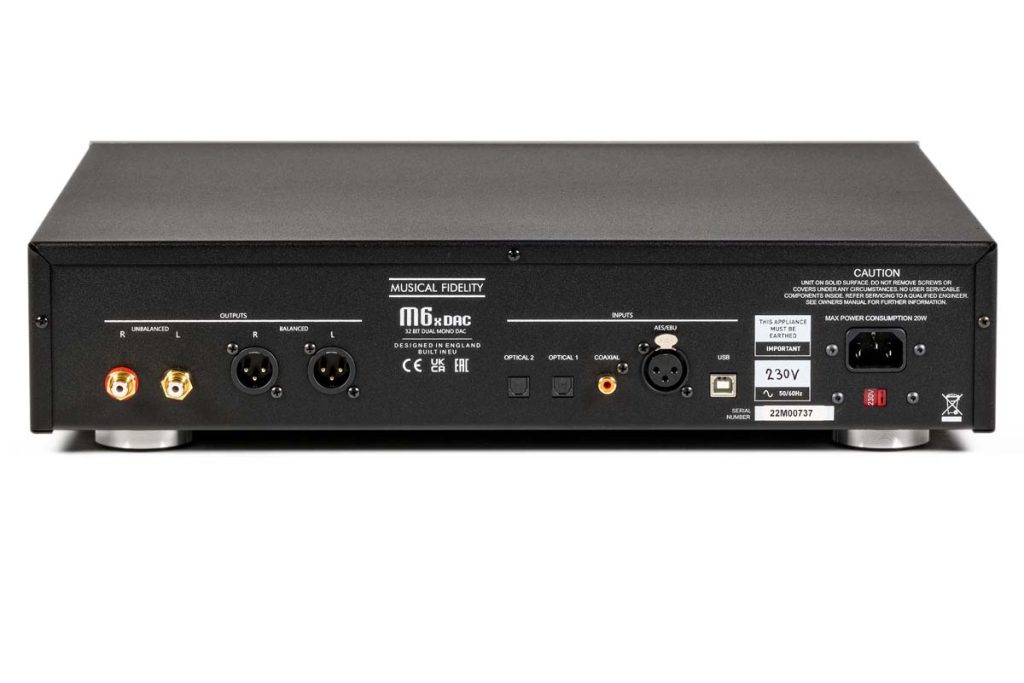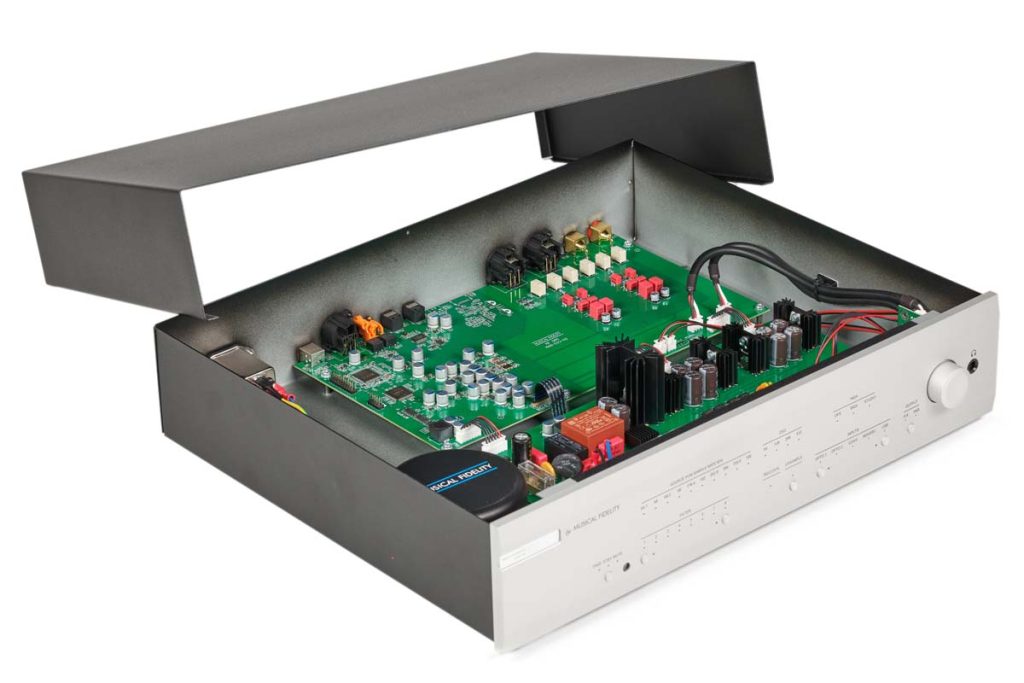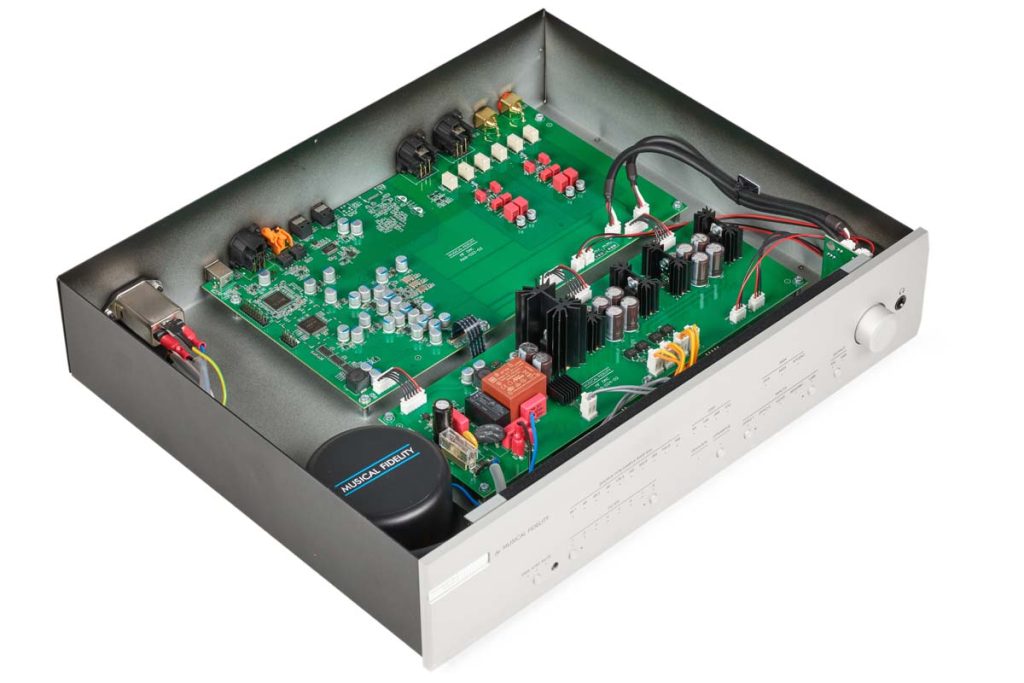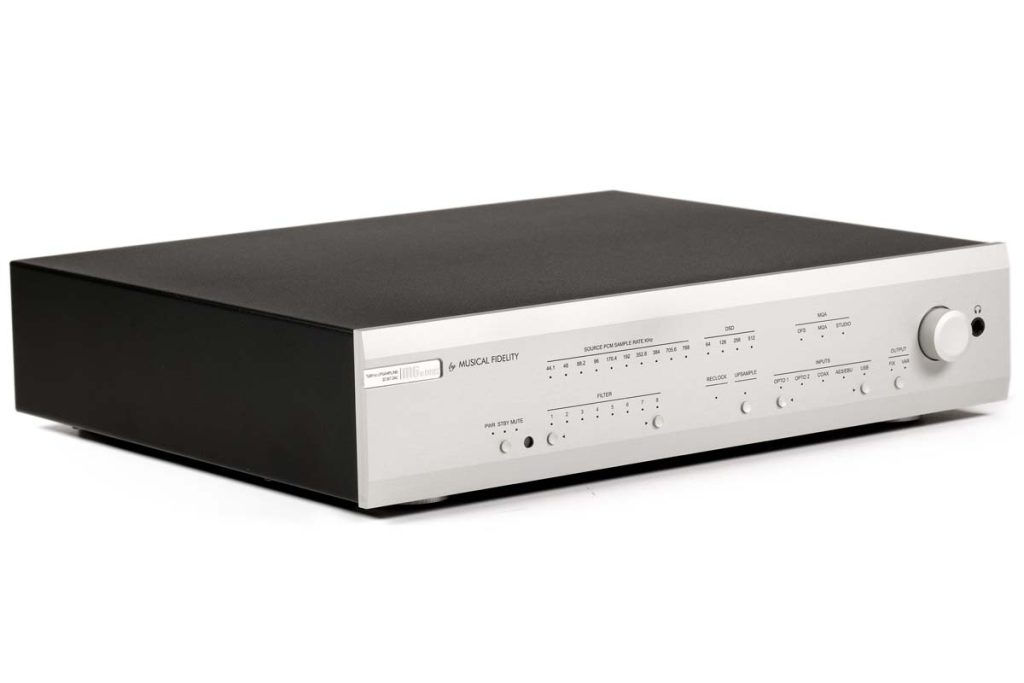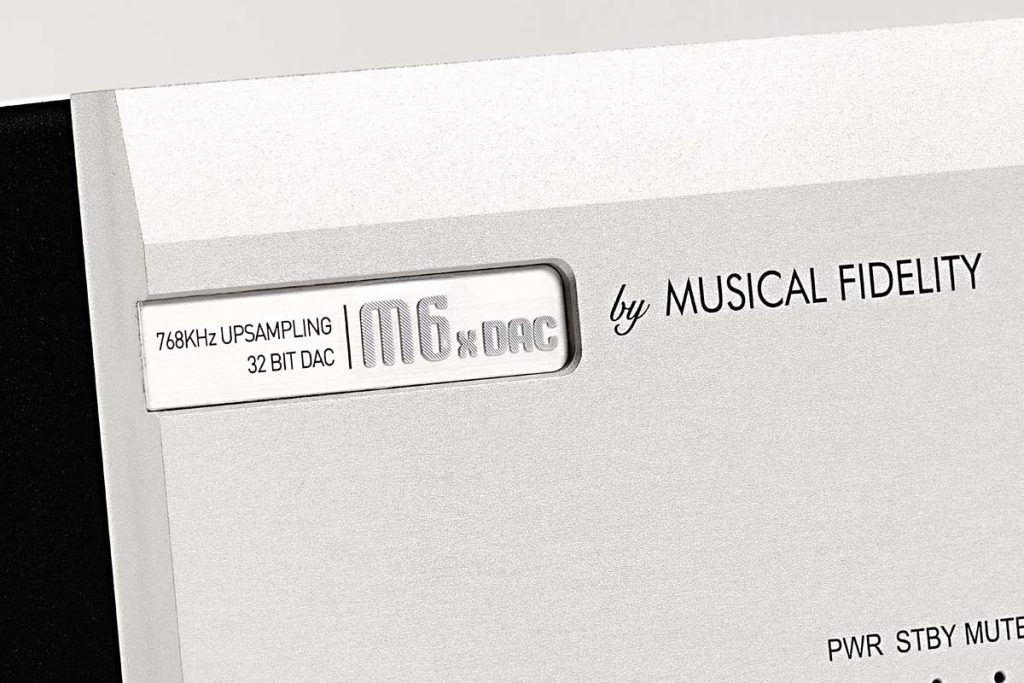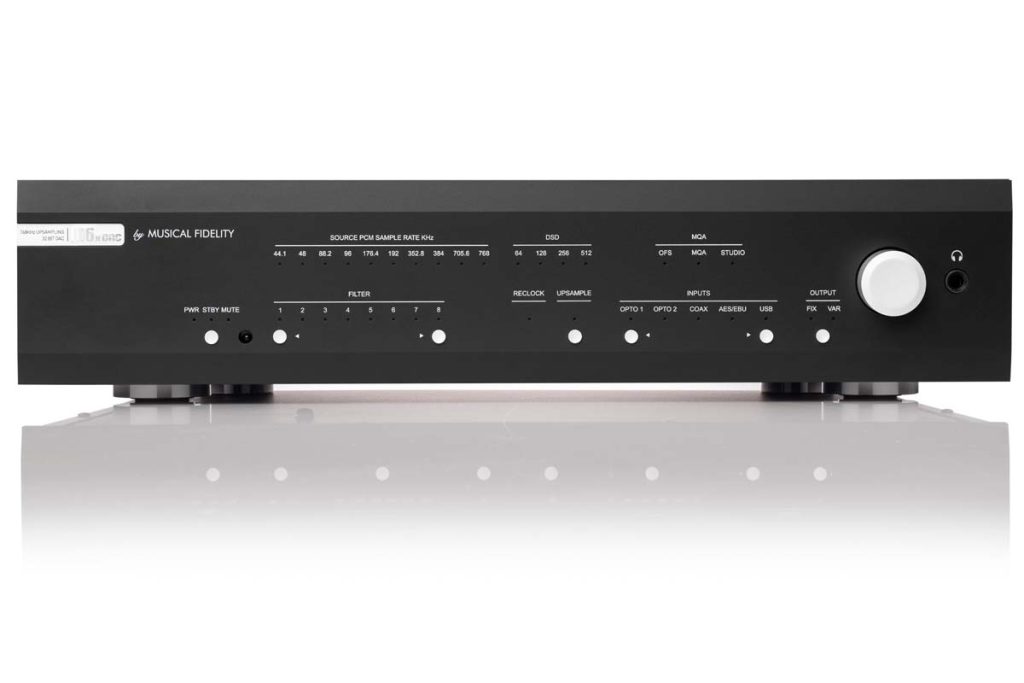No, Europe does not need to catch up in the digital field: The M6x DAC should easily hold its own at the top of the world – and still doesn’t cost the earth.
A DAC is a DAC is a DAC: the device whose importance is the most difficult to convey among acquaintances. A turntable – of course! That’s a highly sensitive mechanical device that should only be approached with measured steps and a good liability. But a converter? Digital is digital, and digital is better. Such views are, of course, more in the realm of “fake news.” The CD era was a phase in which music was a standardized industrial product whose individual specifications one did not really have to deal with, even as an interested music lover. From 1980 on, the rather clear Redbook standard regulated everything that sound engineers and hardware manufacturers needed to know. This has changed significantly: The variety of digital formats is overwhelming, and not every device that can in principle process any codec can do so equally well. Enter: the new upper-class DAC from Musical Fidelity, the M6x.
It follows the much praised M6, whose original variant was pimped up to Roon certification via model upgrades. So it’s time to start all over again from the beginning. It is still a stand-alone DAC, which remembers its actual task: the preparation and conversion of digitally delivered signals for analog forwarding. The device does not have a side job as a streamer and does not pull the signals from the network on its own. Nevertheless, the case is large and majestic: Behind the aluminum front, which is beveled at the top and bottom, it is an impressive 30 centimeters deep. Enough space on the board and around it to place components and circuits appropriately far away from each other. There is also room for a preamplifier, so that a power amplifier can also be controlled directly. On the back there are five digital inputs from USB to AES/EBU, out goes RCA or XLR (or via the front headphone jack). You can see that: A half-hearted connectivity bonanza is foregone in favor of high quality. As always, the visuals are classic: the blue signal LEDs are clearly arranged according to comprehensible themes – output, input, filter, PCM sample rate of the incoming source, etc. – and are really graceful to look at when the room lighting is dimmed. This way you always know what the device is doing, and you don’t need a display that would unnecessarily increase interference risks as an additional element.
Digital signals are no less sensitive than analog signals, just because they are digital. In practice, analog current also flows here in the form of a square waveform. And that is exactly why unwanted components can also get into the binary representation. Moreover, a converter – in this case two ESS ICs from Sabre for a consistent dual-mono setup of the entire M6x – can distinguish between zero and one, but it cannot anticipate when they will be delivered. As always, though, timing is everything. Musical Fidelity solves this by a triple reclocking – so to speak in the front, in the middle and in the back – in order to clock the zero-one transitions cleanly, so that the signal is delivered with as ideal a square wave as possible. The signal is then converted with 32 bits, as is typical for ESS, which promises a high dynamic range and a high degree of freedom from distortion.
But before that, the signal can be sent through seven preset reconstruction filters via a button. These influence variables such as aliasing and pre-swinging and range from moderate intervention depths to the violent “brickwall” filter: This delays the signal and thus increases the pre-swinging. In terms of sound, you have to imagine this setting as it was at the beginning of the CD era, when the sound was unusually crystalline and exhibited some oddities in the reproduction of high, percussive instruments. How the filters make themselves felt depends to a large extent on the source and the recording. Sometimes the bass becomes more prominent, sometimes the treble appears more transparent, sometimes the sound image gains in three-dimensionality, sometimes the playback becomes more focused – and sometimes it’s more subtle nuances. The filter can be bypassed with the eighth preset. Soon you won’t want to miss these options: Because this way, qualitatively different feed players and the fluctuating quality of audio material can be managed very well from case to case. That’s a lot of fun.
And this is exactly where the qualities of the DAC lie: You can confidently entrust everything to it. Jürgen Reichmann from the German sales department puts it in a nutshell: “Even a gourmet sometimes eats a liver cheese sandwich.” In other words, HiRes files are a beautiful thing, but who wouldn’t have found themselves streaming a radio station via Bluetooth now and then? Accordingly, Musical Fidelity has always focused on processing input signals with upsampling, oversampling and reclocking. However, because the quality of the material supplied by the sources gradually improves, the processing can be minutely influenced with the 6x – which literally turns the DAC into a digital control center.
These qualities show up sonically on a really impressive level. With a price below 2500 Euros, the Musical Fidelity M6x DAC is a really affordable device that sounds significantly more expensive. In the test environment, it effortlessly outperforms the Cambridge Audio CXN as expected, upgrades the TEAC UD-701N with a significant increase in transparency and bass control, and also noticeably refines the old Creek CD player, which has already put many an expensive device to flight.
These qualities show up very audibly – when it comes to unraveling the Rolling Stones’ “Twin Guitars,” for example. This concept, perfected with Ron Wood, involves making guitar figures as indistinguishable as possible. Nevertheless, Stones listeners expect Keith Richards’ playing to stand out clearly, because he is, after all, the boss. Generations of sound engineers have labored over this paradox. Let’s listen to what Don Was made of it on A Bigger Bang. This album has the peculiarity of making the Stones sound like a punky garage band, but with the most expensive – and most digital – means of production. As a result, the whole CD sounds as if the sum had been routed through the cheap but powerful “Maximizer” plug-in of Cubase: the guitars run into each other, Charlie Watts sounds as if he had biceps like Dolph Lundgren in Masters of the Universe – of the cymbals only harmonics can actually be heard. But lo and behold, the filter’s “linear phase fast roll off” setting sets the slide guitar and Ronnie’s solo interjections, on the one hand, and Keith’s powerful rhythmic chops, on the other, well staggered from each other. One of the most accomplished elaborations of the “Twin Guitars” can be found on Emotional Rescue. Here you can already notice (and without any filter at all) how the Creek messes up a lot on “Let Me Go”, the playfully damped and technically reverberated surf sixteenths of Ron Wood are projected by the Musical Fidelity much more present.
That the M6x can be trusted completely is shown by Spirit Of Eden by Talk Talk – an album that is too beautiful to stream, MQA or not. In this case, it’s worth making an exception: Everything is really represented in the sound spectrum and meticulously resolved, dynamically the DAC makes the fleas cough and the walls shake abruptly. And: the largely natural instrumentation sounds like it, too. And so you have a reliable companion in the M6x for the parforceride through the music collection: You can track which guitars on “The Dope Show” by Marilyn Manson remained from the demo production in the final mix, listen to the string sounds of Al Di Meola, John McLaughlin and Paco de Lucia on Friday Night In San Francisco or go on a music-archaeological search for the preserved part of Wilhelm Furtwängler’s radio recordings – because it is already a special experience to make recordings from the time shortly before World War II sparkle through this performance show of today’s technology.
No question: Musical Fidelity has succeeded in creating more than just a worthy successor to its much-praised predecessor. In the M6x, the digital part of the playback chain can be brought together regardless of the musical situation – and in such a way that really no wishes remain unfulfilled. Especially no wishes for a more expensive device: The Musical Fidelity M6x DAC outclasses many a competitor far above its price range.
Accompanying Equipment
Amplifier: Creek Evo IA, TEAC AP-701 | Loudspeakers: Neat Momentum 4i, Bryston Mini A, Focal Alpha 80 | CD player: Creek Evo 2 | DAC/Network Player: Cambridge Audio CXN, TEAC UD-701N
D/A-Converter
Musical Fidelity M6x DAC
Concept: fully balanced D/A converter with “32 Bit Hyperstream II” technology | Inputs digital: 2 x optical Toslink, 1 x S/PDIF, 1 x AES/EBU, 1 x USB-B 2.0 | Outputs analog: 1 x unbalanced (RCA RCA), 1 x balanced (XLR), 1 x 6.3 mm jack (headphone output) | Digital formats: PCM up to 768 kHz, max. 32 bit; DSD256 (stereo DoP), DSD512 (stereo native) | Special features: Headphone amplifier, eight switchable digital filter presets | Finish: silver/black | Dimensions (W/H/D): 44/10/39 cm | Weight: 7 kg | Warranty period: 2 years | Price: around 2400 €
Reichmann Audio Systems
Granegg Street 4
78078 Niedereschach in the Black Forest
Phone +49 7728 1064

